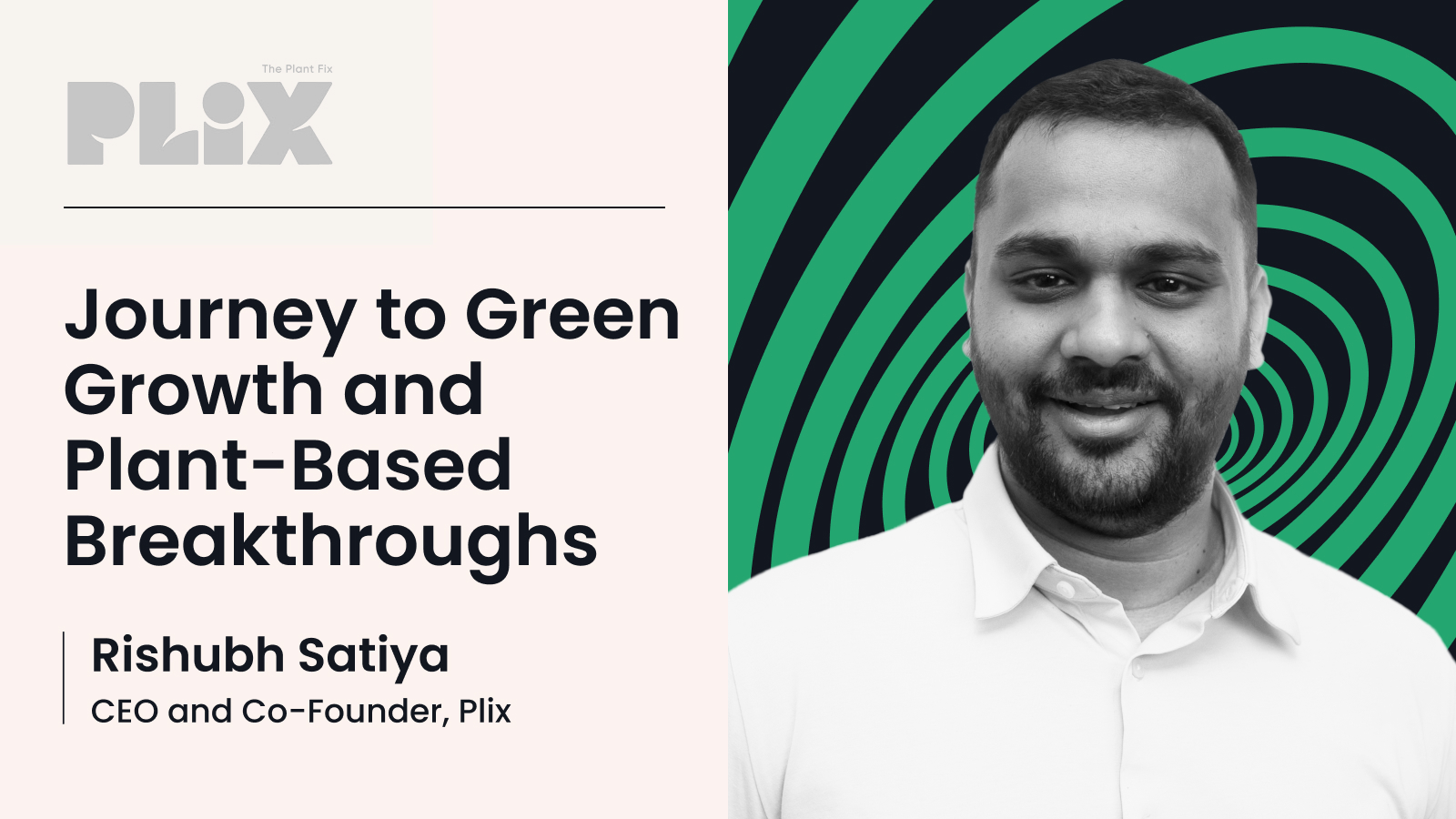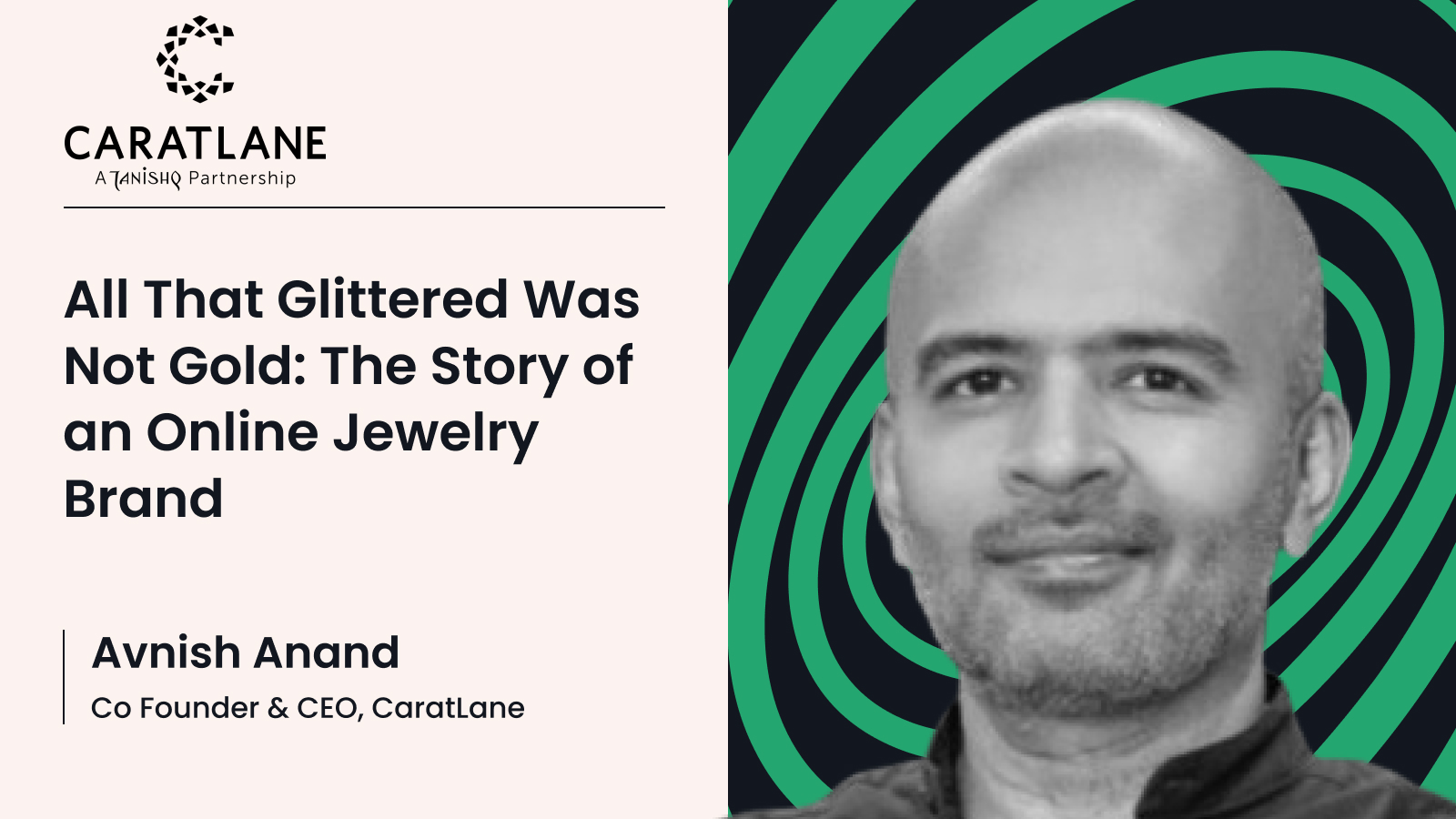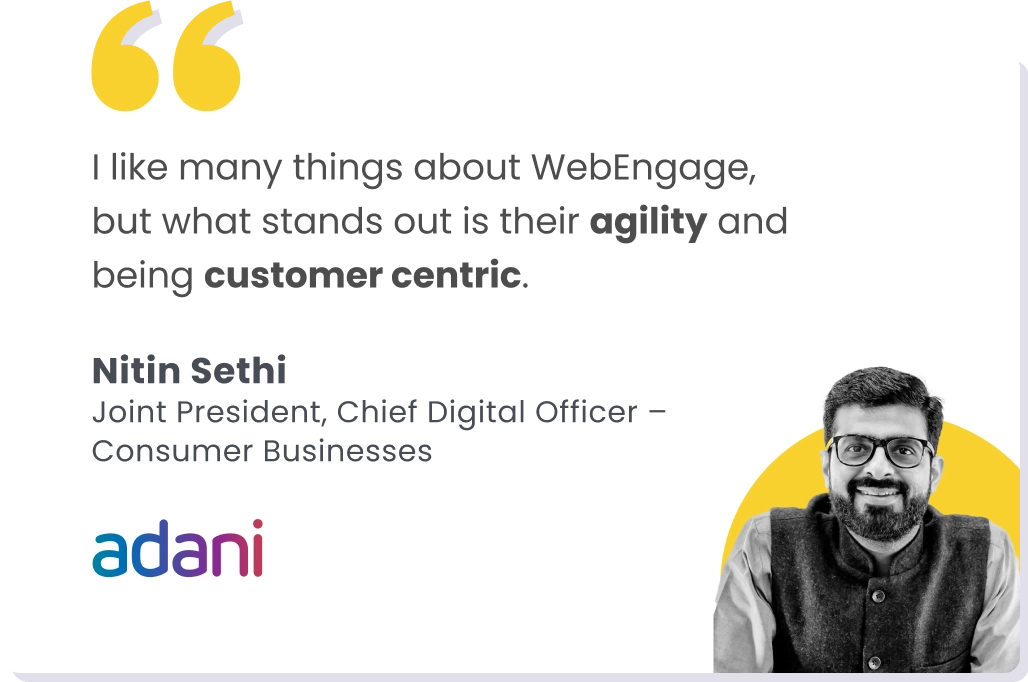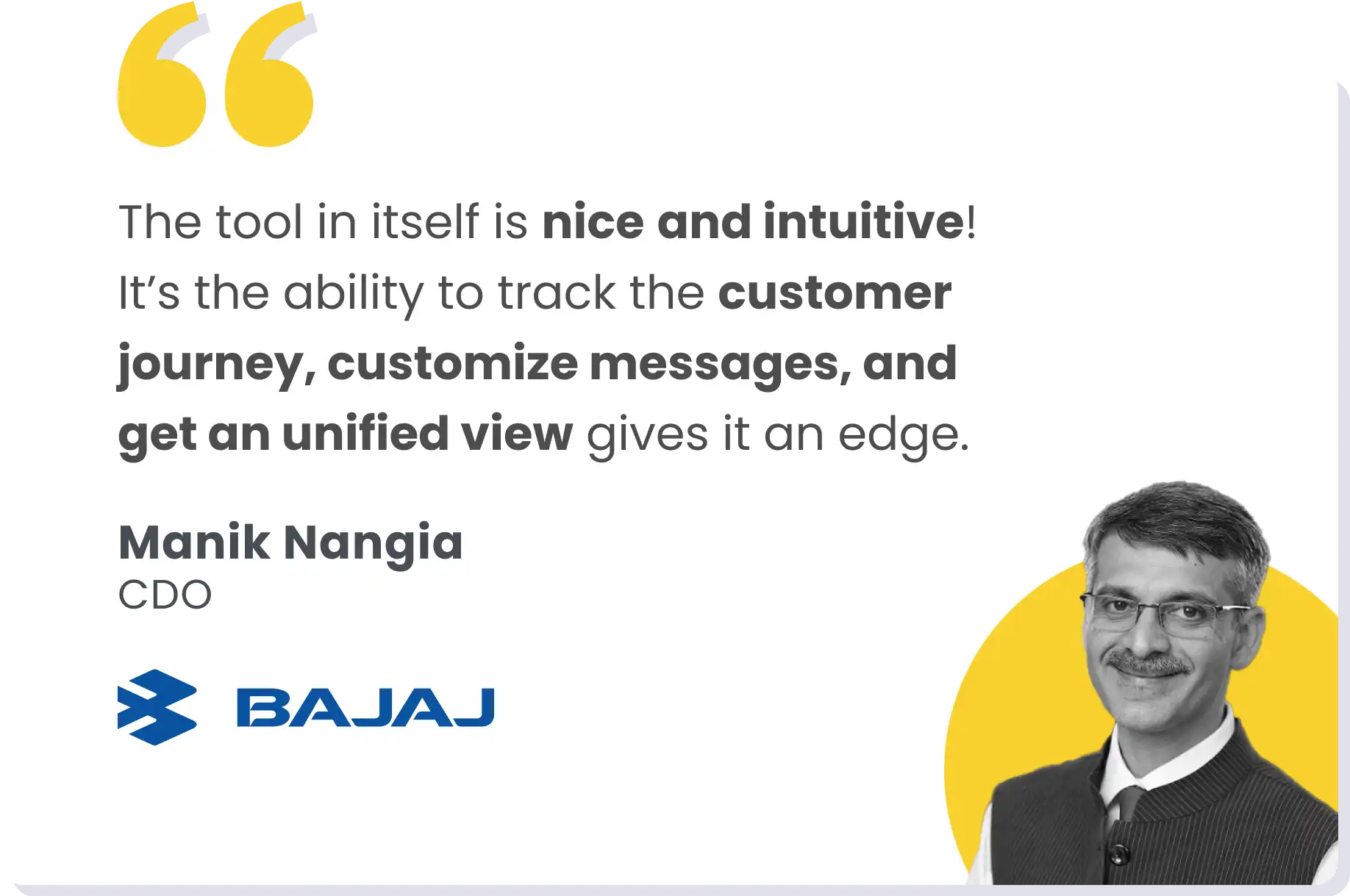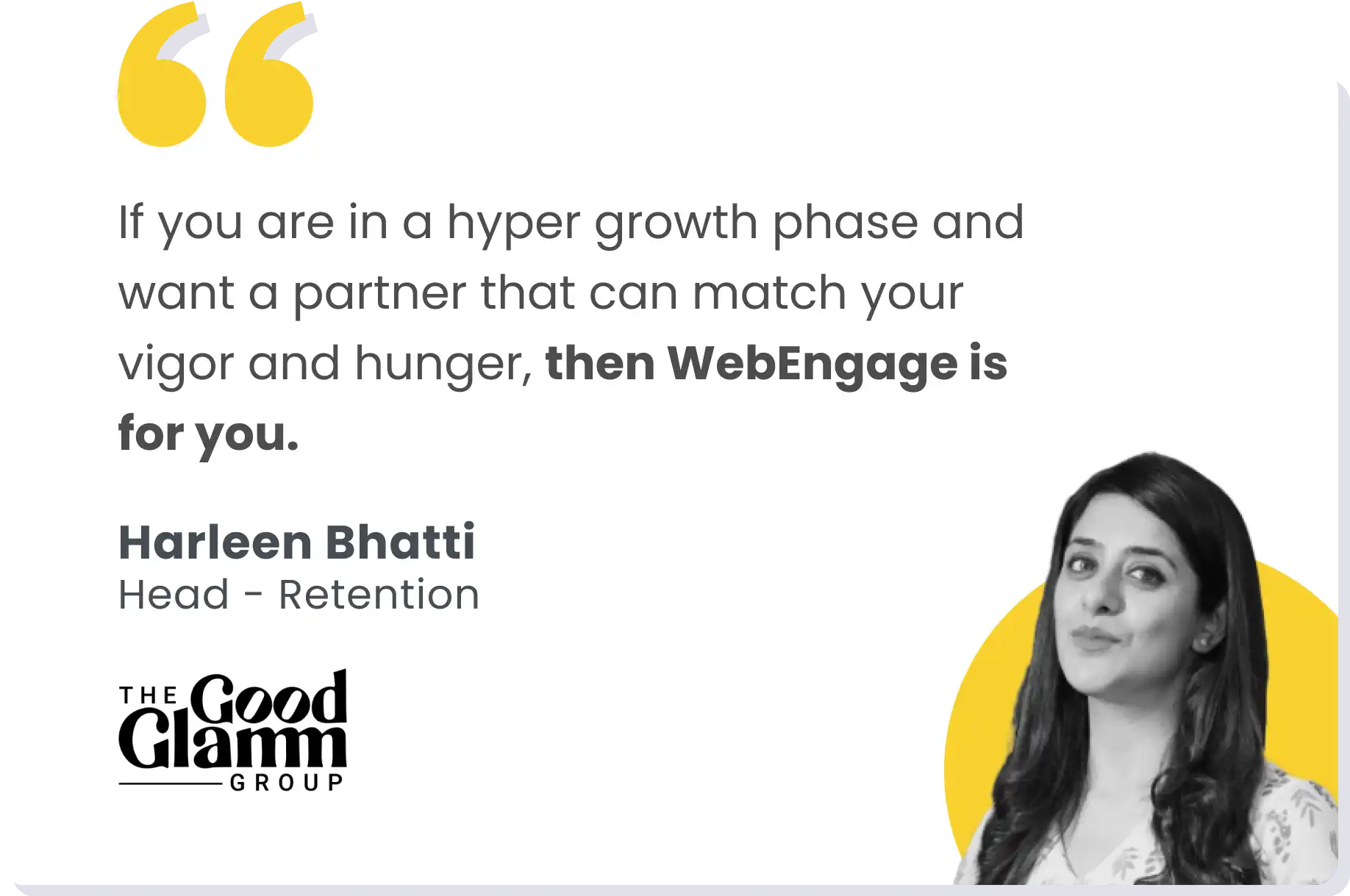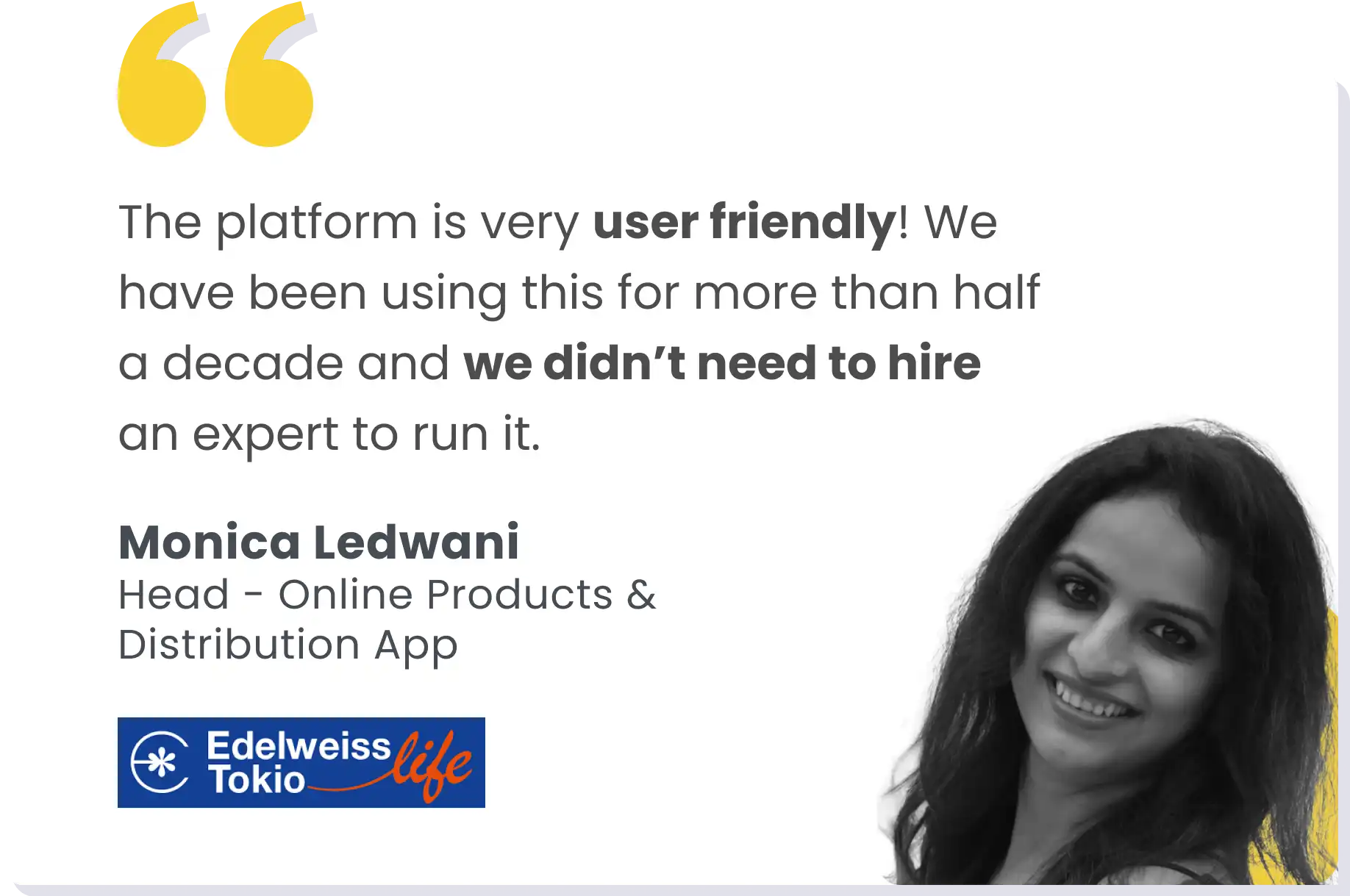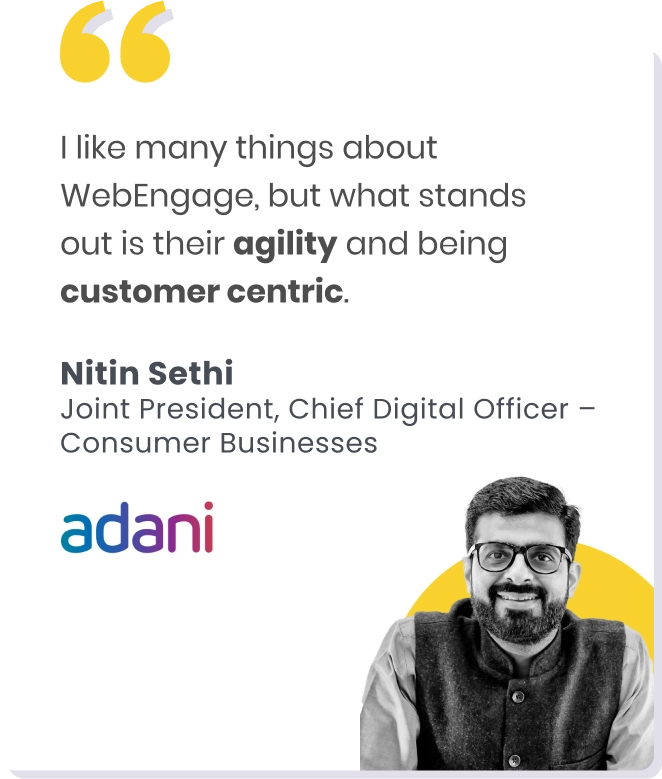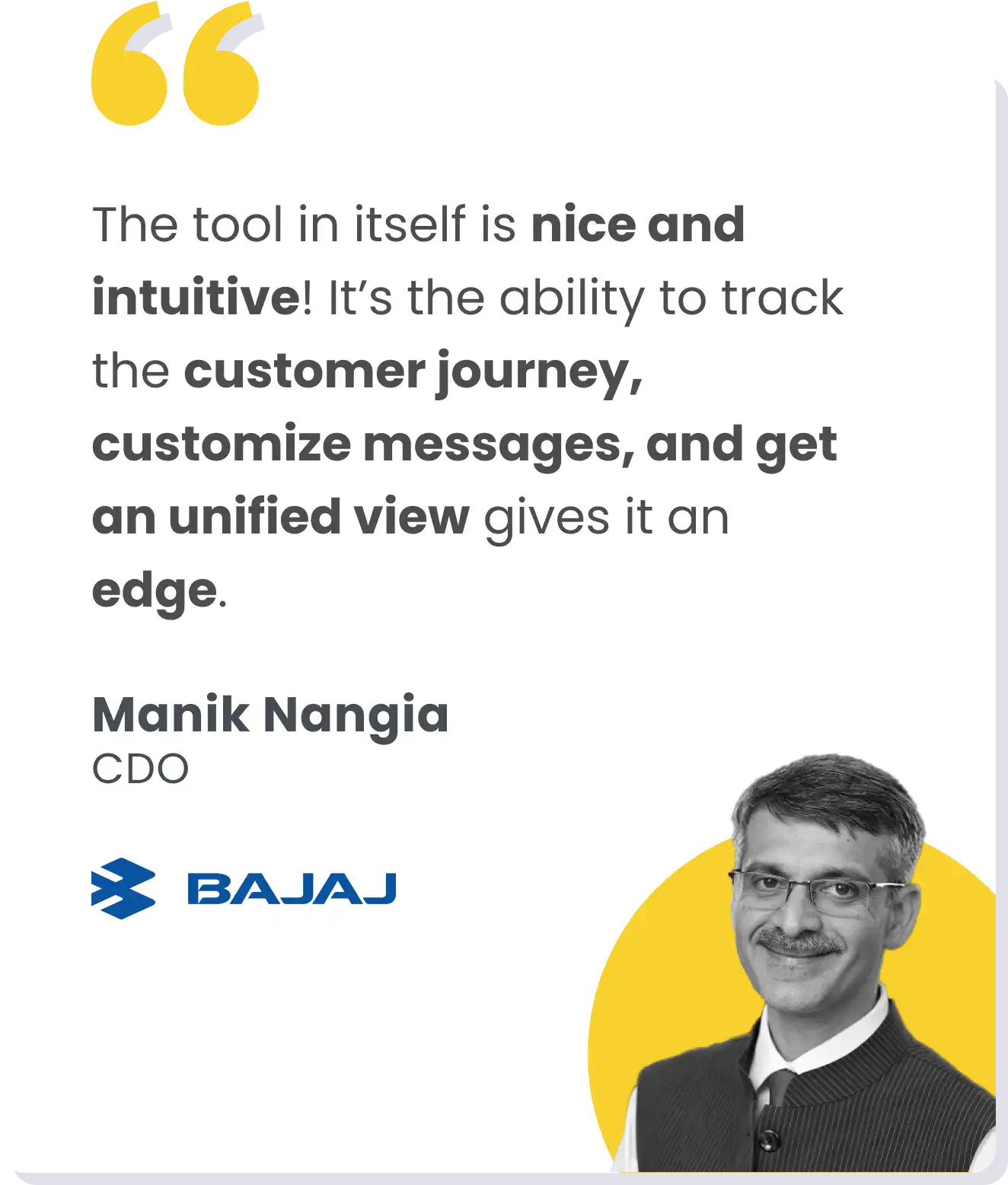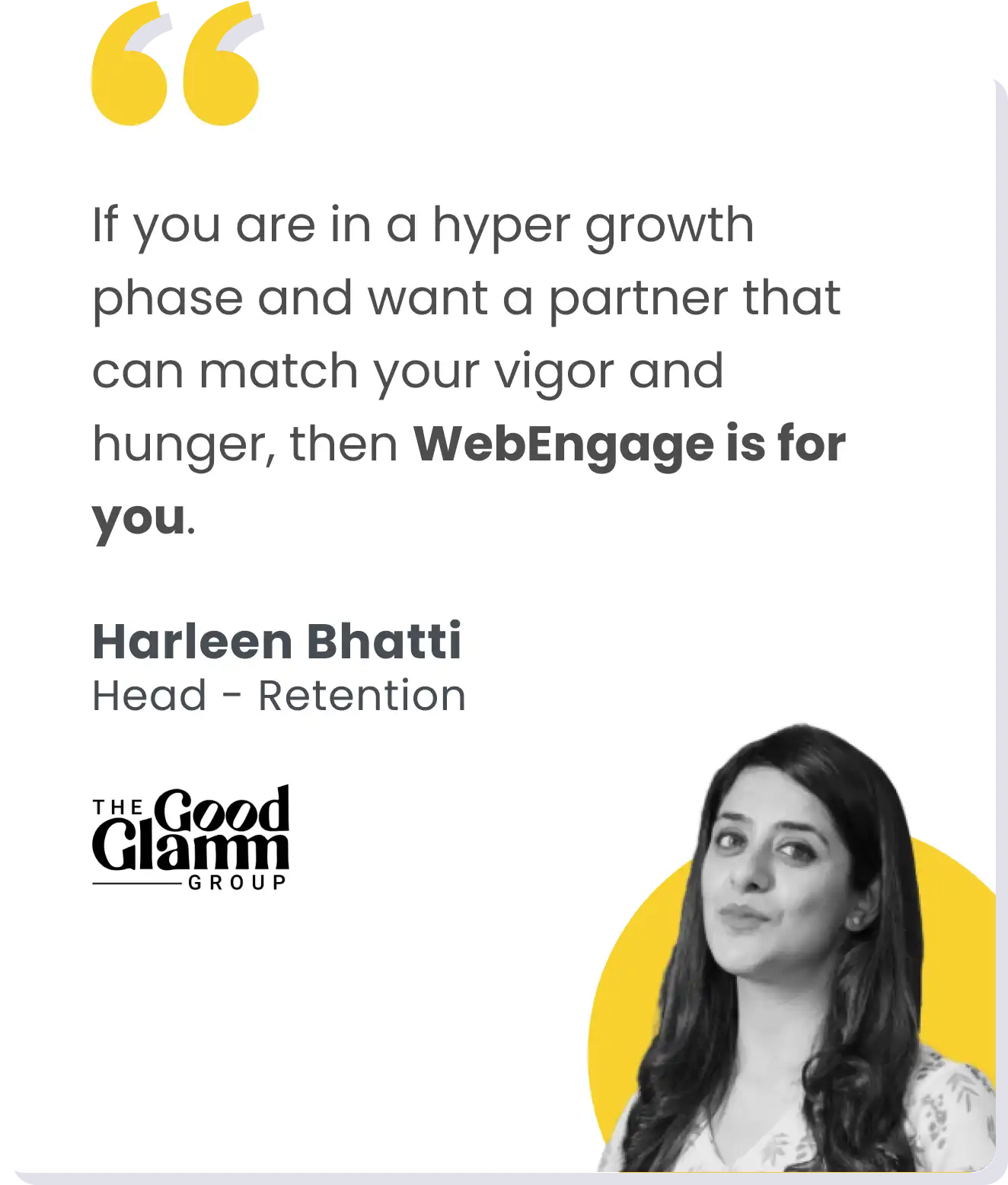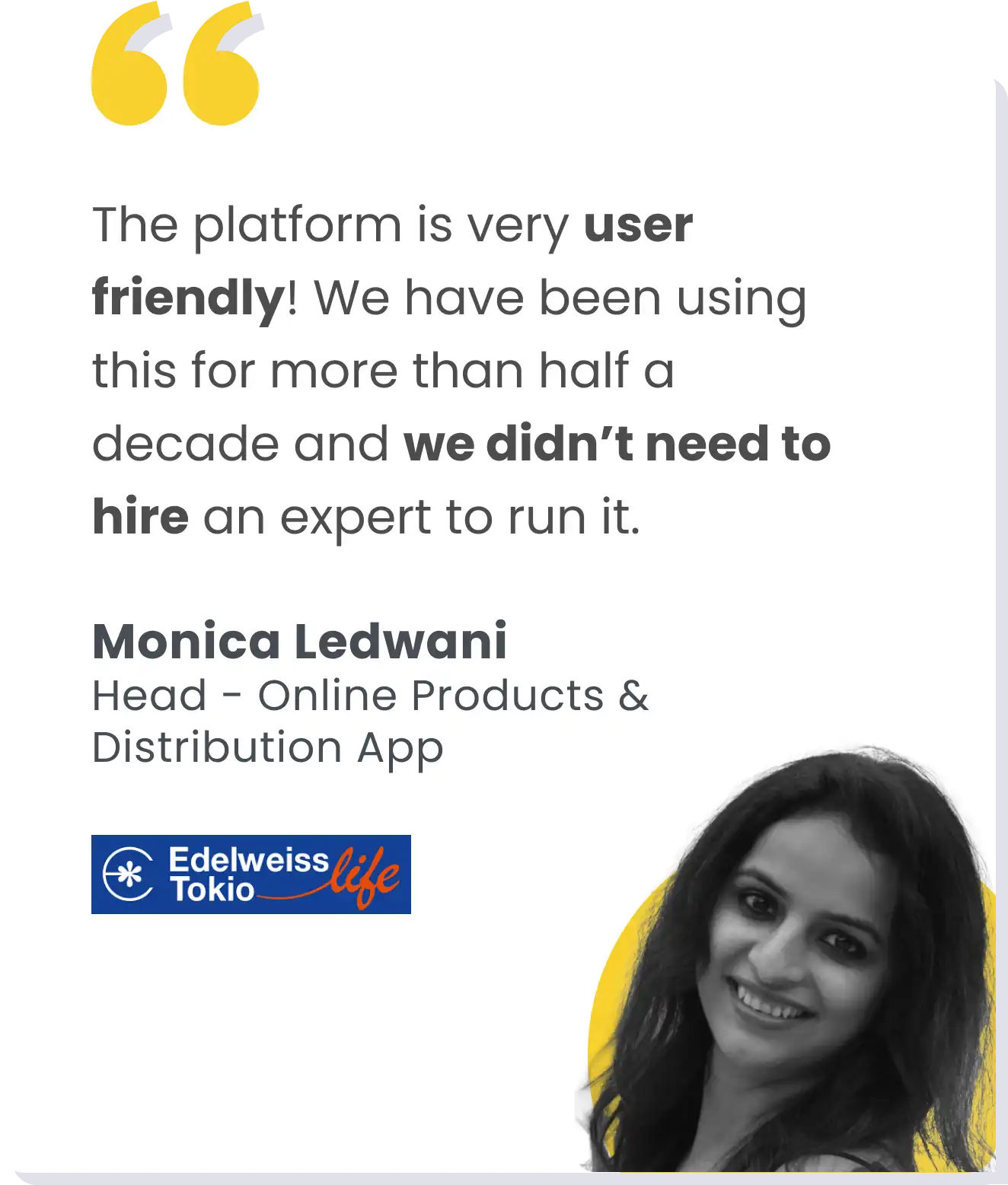In the world of wearable tech, straddling the line between innovation and user engagement is a tough challenge, but one that Noise has managed to navigate with a keen understanding of both technology and human behavior.
Guiding them has been Gaurav Mehta, a veteran marketer with 15 years of experience across various companies, and CMO, is the one who helped Noise transform from a product-centric company to a community-driven ecosystem.
In this edition of the State of Retention podcast, Gaurav shares time-tested insights from the brand’s journey that can inspire you to improve your brand’s retention strategy.
Let’s take a look at some of his most high-impact tips:
Gaurav’s 15 Years As A Marketer Across Digital Companies
My journey started back in 2008 with Yahoo, where I first learned the power of personalizing at scale.
I was exposed to the latest strategies in user engagement and content marketing, along with using algorithms to tailor user experiences across different channels like Mail, Messenger, Sports, and Finance.
Next, I moved to OLX, where I learned about marketplace dynamics and the importance of creating engaging experiences in a two-sided market since our users consisted of both buyers and sellers.
My journey then took me to OXXO, where I was the Chief Marketing Officer for four years, tasked with bridging the gap between traditional retail and e-commerce. Here, I focused on creating omnichannel experiences and using tech to enhance in-store engagement.
As the marketing and content head at Caro next, I descended into branding and storytelling to create value-driven content that continued to attract traffic beyond the first visit.
Finally, before joining Noise, I was at Zupee, a real-money gaming company where I had to aim for user retention in a highly competitive market.
All of these diverse experiences have proved invaluable to my work at Noise so that we can build not just great products but meaningful, long-lasting relationships with our users.
Where Tech Meets Emotion: A Brand’s Journey Unveiled
At Noise, we strongly believe that tech should enhance our users’ lifestyles, not complicate them. As a result, our goal is always about finding that sweet spot where functionality meets emotional appeal.
Back then, we saw how most wearable tech devices mostly focused on functionality. But instead of just having the best features, you need to make people feel good when they’re using your products.
We started with product design. We saw how for many users a fitness tracker or a smartwatch is more than just a device. It was also a reflection of their personal style.
This meant we had to invest heavily in product and user experience design, ensuring that interactions with our products felt smooth and natural.
As Noise scaled up and evolved, we found out that to build lasting emotional connections, we had to understand the context in which our products were used.
For example, a fitness tracker isn’t only used to count steps – its larger goal is supporting someone’s journey to better health.
By placing their needs and desires at the forefront of our design, we were able to create products that truly resonated with them.
Catch Them Young, Carry Them For Life
This phrase speaks volumes about how you should think of user engagement.
From my experience, I’ve realized that the initial or early stages of user interaction are critical.
Additionally, by engaging younger users, you can set the foundation for lifelong relationships.
Take, for example, our IPL campaign, where we experimented with cricket gamification.
It managed to captivate users right from the start!
We designed this strategy to draw users into a bigger ecosystem where they could interact and play with our core features.
In this system, the initial touchpoints were designed to blend entertainment with utility, making for a memorable brand experience.
The Role of Gamification in Post-Purchase Engagement
Gamification is a powerful tool for post-purchase engagement, and at Noise, we’ve used it to build memorable user experiences.
When a customer buys a product from our catalog, we have designed their interactions in such a way that using it feels more rewarding by adding fitness challenges and streaks.
This created a sense of achievement—from completing a step goal or maintaining a workout streak.
This also makes the device an integral part of their daily routine.
Not to forget, gamification also helps build a community. When users share their achievements, it fosters a sense of belonging and cements their connection to the brand.
How Noise Tailors User Experiences for Maximum Impact
At Noise, we understood very early on that each user is unique and has specific needs, preferences, and behaviors.
Our goal then became to create a seamless, personalized experience that not only meets their expectations but also anticipates them.
For example, the moment a customer interacts with our brand, be it our website, app, or even product, we segment them into specific cohorts based on their purchasing behavior, what content out of ours they engaged with recently, etc.
Once this segmentation is done, we deliver personalized fitness content with unique challenges, workout suggestions, and motivational prompts.
We also use this data to communicate better through push notifications, emails, or in-app messages. This way, they don’t get bombarded with generic messaging; instead, they find content that aligns with where they are in their fitness journey.
Lastly, our approach to personalization goes beyond just content. Our product design is also based on user feedback.
The Human Motive: Making Fitness Gamification Meaningful and Authentic
When it comes to fitness gamification at Noise, we had to look at human motives. For example, why do people want to stay fit and healthy?
Fitness is a personal journey that includes physical health, emotional well-being, self-esteem, and feeling part of a community. Knowing this, we designed our gamification elements to align with those goals.
But here’s the thing: we don’t just reward users for hitting random milestones. Instead, we create challenges that connect to their fitness objectives, like several steps or kilometers in a week or maintaining a consistent workout regimen.
We also added social elements like leaderboards and social badges because we understood that peer support plays a critical role in fitness.
Lastly, as I mentioned above, we pay attention to user feedback. Every time they complete a challenge or hit/miss a goal, our messaging always remains constructive and engaging.
Forget focusing on what they didn’t achieve; instead, we highlight their progress and suggest ways to improve.
Positive reinforcement like this keeps them engaged and makes fitness a sustainable lifestyle instead of a vague, temporary goal.
Cohortization and Segmentation: The Key to Tailoring Vertical Experiences in Health Tech
At Noise, cohortization and segmentation as a strategy are crucial for delivering personalized experiences in the health tech space.
For example, someone who just bought their first health device has different needs compared to an experienced athlete who’s tracked their performance for years.
By understanding these cohorts, we customize both content and features to meet their goals, such as beginner guides for new users or advanced analytics for those who are more experienced.
By personalizing our engagement strategy like this and ensuring each interaction feels intentional and impactful, we meet each user where they are, boosting user satisfaction and retention.
The Power of Tactical Triggers
The right nudge at the right time is critical if you want to increase both the number and quality of your user interactions.
From reminders urging them to complete a fitness challenge, notifications congratulating them for achieving a milestone, or prompting them to explore a newly launched feature, triggers can create consistent participation.
Here too, we leverage our user data to deploy triggers at the right time and ensure the messaging is contextually appropriate for each segment.
Strategic Priorities: Navigating Bandwidth Crunch in the World of Wearables
All of us are dealing with limited resources and time, and that means managing the bandwidth of our team members and prioritizing resources is crucial.
You want to consistently make smart decisions on where you should pour focus and effort to drive the most ROI.
We sometimes put aside less critical projects to ensure we’re contributing to areas that will move the needle the most.
Conclusion
In the world of wearable tech, Gaurav Mehta’s insights are a blueprint for how companies can merge innovation while keeping human emotions at the center of engagement strategies.
From using gamification elements to keep users engaged post-purchase to the intense focus on cohorts, his recommendations highlight how brands can drive sustained growth.
Want to hear the full interview and find more nuggets of such insight? Listen to the full podcast episode here!
Curious still about how more top brands build and experiment with their retention strategies?
Check out our growing catalog of State of Retention podcasts for more expert interviews so you can optimize your retention numbers!





